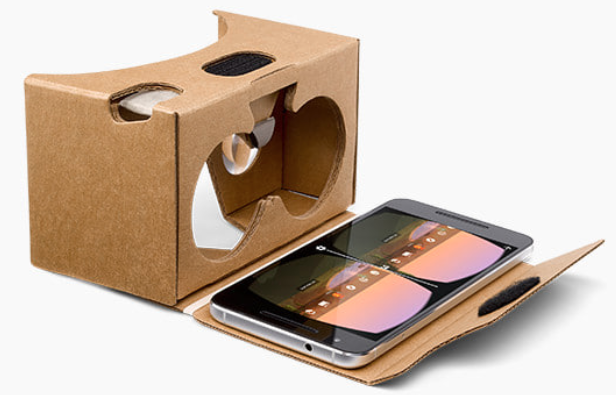It’s official: smartphone-based VR is dead. The two big players in this space were Samsung Gear VR (powered by Oculus, which is owned by Facebook) and Google Daydream. Both have called it quits, with Google omitting support from their newer phones and Oculus confirming that the Gear VR has reached the end of its road. Things aren’t entirely shut down quite yet, but when it does it will sure leave a lot of empty headsets laying around. These things exist in the millions, but did anyone really use phone-based VR? Are any of you sad to see it go?

In case you’re unfamiliar with phone-based VR, this is how it works: the user drops their smartphone into a headset, puts it on their head, and optionally uses a wireless controller to interact with things. The smartphone takes care of tracking motion and displaying 3D content while the headset itself takes care of the optics and holds everything in front of the user’s eyeballs. On the low end was Google Cardboard and on the higher end was Daydream and Gear VR. It works, and is both cheap and portable, so what happened?
In short, phone-based VR had constraints that limited just how far it could go when it came to delivering a VR experience, and these constraints kept it from being viable in the long run. Here are some of the reasons smartphone-based VR hit the end of the road:
It was a wedge between a user and their phone. Using a phone for VR is a battery-draining process, and it also means the phone is unavailable for its normal duties while it is busy powering a VR experience. This limits user adoption, because most people really don’t like to be without their phones.
It could be cumbersome. User retention was a problem in part because phone-based VR could be a bit of a hassle. Oculus CTO John Carmack acknowledged that if using a device means popping a phone out of a phone case, docking it into a headset, then undocking it afterward and putting in back into the phone case, “you will use it twice.”
Immersion was limited because motion sensing in phone-based VR was limited to three degrees of freedom (DoF). This meant seated-only experiences in which one could swivel one’s head about to look around in VR, but the headset could not track motions like leaning in closer, or otherwise moving around in the virtual world.
Phone-based VR was unable to keep up with the kinds of features and experiences that developers were discovering worked well in VR. One example is the ability to move about in a virtual space. Purpose-built VR headsets like the Oculus Rift and HTC Vive allowed six DoF movement. This permitted users to move about much more naturally, delivering more compelling and interactive experiences.

In the end, phone-based VR was an important precursor for the much more advanced VR headsets that are available today, but even its niche capabilities no longer set it apart. One compelling advantage that phone-based VR offered was that it was portable, wireless, and self-contained. But even that isn’t something it does best anymore. The Oculus Quest (released earlier in 2019) is also self-contained and completely wireless, but suffers from none of the limitations inherent to phone-based systems. Phone VR just hasn’t been able to keep up.
The end of phone VR also means something else: a whole lot of empty headsets. By 2017, Google had shipped over 10 million cardboard headsets. Gear VR alone sold over 5 million worldwide. Since user retention was poor and at least some of these headsets were free bundles, it’s fair to say that a good number of them are already gathering dust. But now that support is officially ending, what’s going to happen to all of these empty phone-based VR headsets?
The good news is that the headsets are fairly simple devices, and easily tampered with. Since they include optics, putting a screen inside them is about all it takes to make a basic head-mounted display. We have seen a few projects that take advantage of this, like this remote-controlled telepresence tank which uses a smartphone as the display but eschews any phone VR SDK, and this homebrewed system using a small HDMI display in lieu of a phone. Perhaps older phones that retain VR compatibility could find a home as displays for special projects.One thing that may help is that Google just announced the open sourcing of Google Cardboard. What do you think? Will these old headsets be good for anything, or will they join empty 3D printer filament spools as semi-hoarded tech junk?